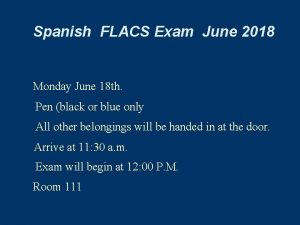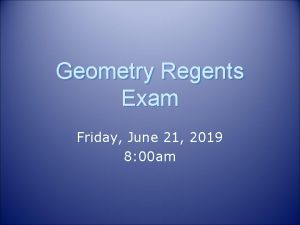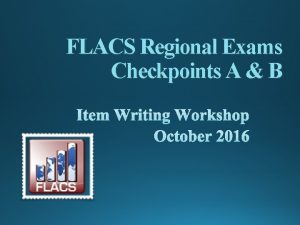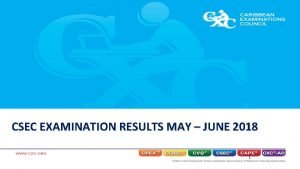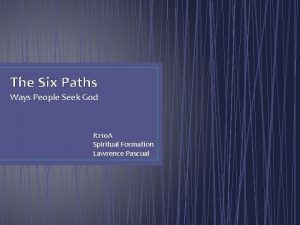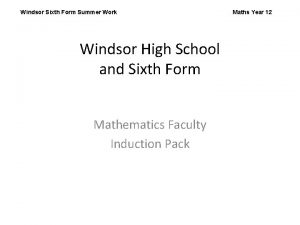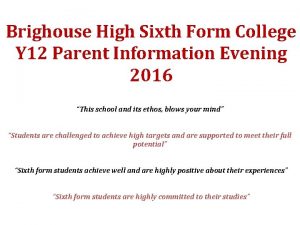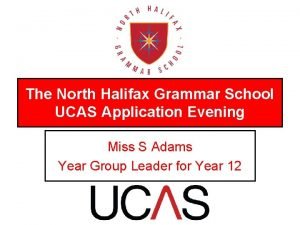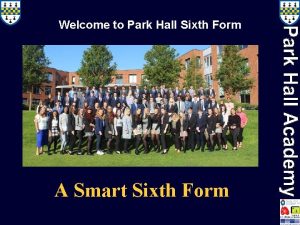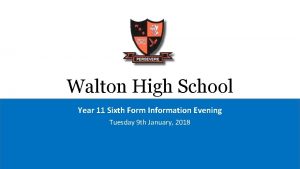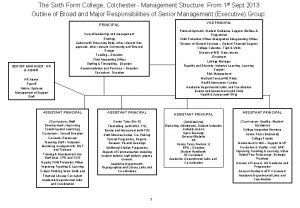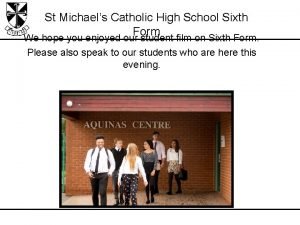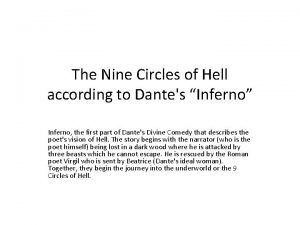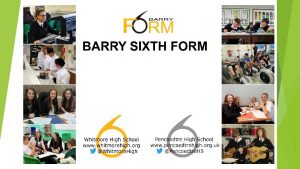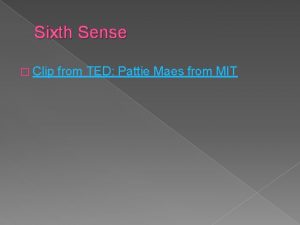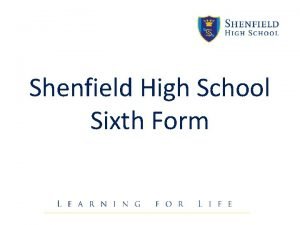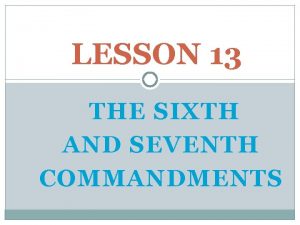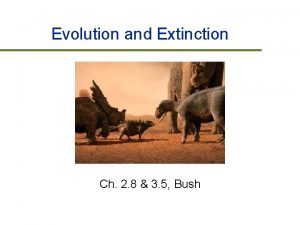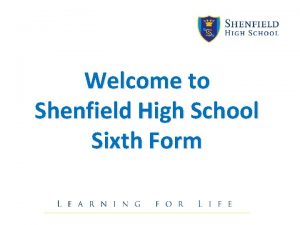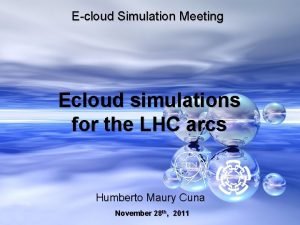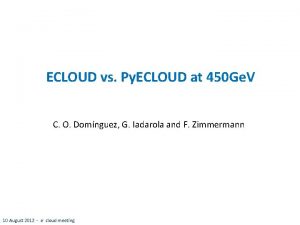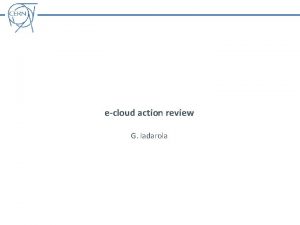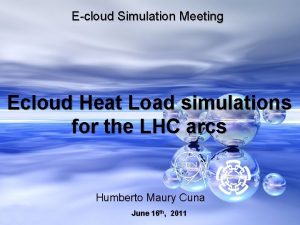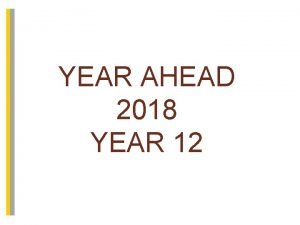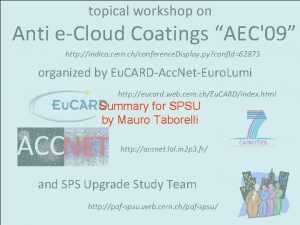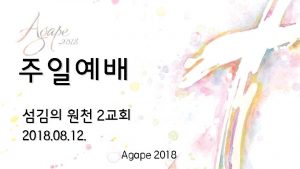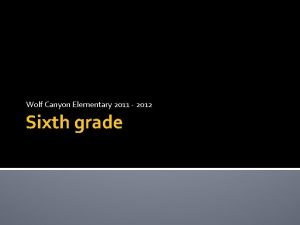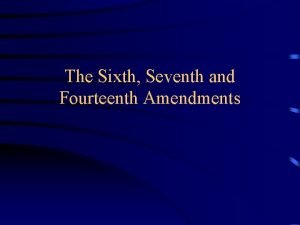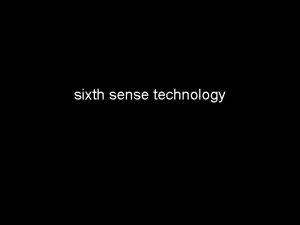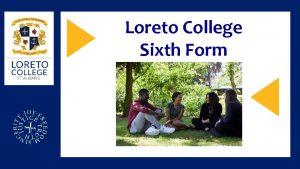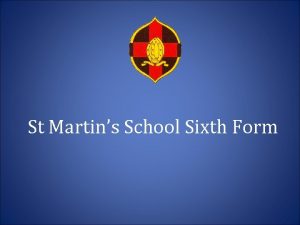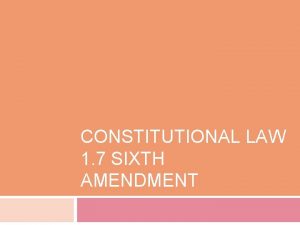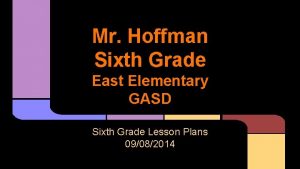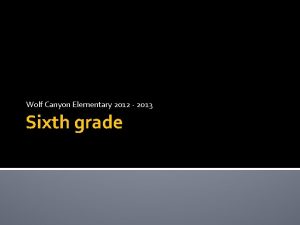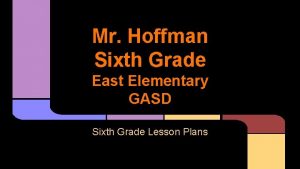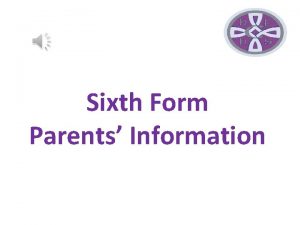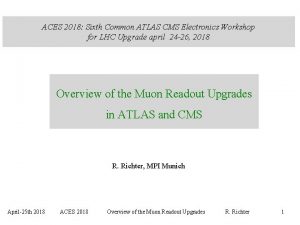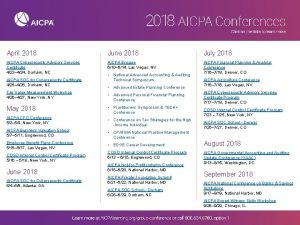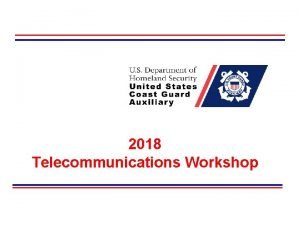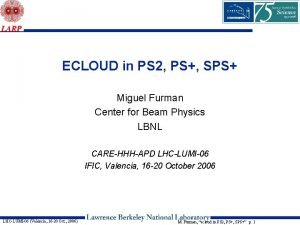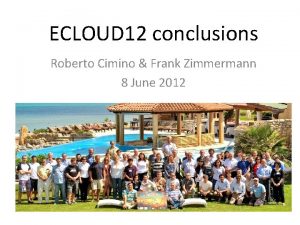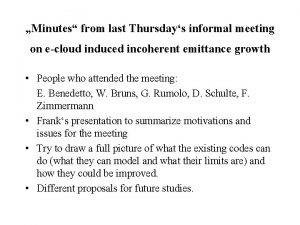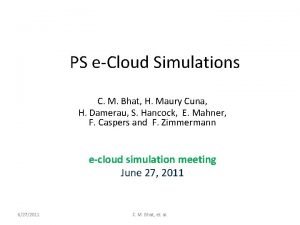Sixth ecloud workshop ECLOUD18 3 7 June 2018




























- Slides: 28

Sixth e-cloud workshop, ECLOUD'18, 3 -7 June, 2018, La Biodola (Isola d'Elba), Italy Intrabunch feedback system development at DAFNE Alessandro Drago INFN Frascati & Tor Vergata Rome University

I will report on behalf of a large collaboration project leaded by John Fox. The names of all the participants are shown below. However conclusions of the talk will be only by me. 3 -6 June 2018 Alessandro Drago ecloud'18 2

Topics • • Introduction LARP collaboration for SPS/LHC e-cloud feedback (USA) Hi-Lumi-LHC collaboration (Europe, FP 7) DAFNE team contributes Other developments A feasibility study for DAFNE? Conclusion 3 -6 June 2018 Alessandro Drago ecloud'18 3

Introduction • After the year 2009, John Fox start to ask funds to the LARP program in USA for research on a new type of feedback, able to damp bunch slices independently and to be implemented in SPS/LHC • Unfortunately the LARP funding for the wideband feedback ended on September 2017 3 -6 June 2018 Alessandro Drago ecloud'18 4

How it began • The first paper was presented at IPAC’ 10 and John proposes an Ecloud Feedback with a name indicating the object of the cure • Many researchers start to call intrabunch feedback the project, hence reporting the action of the system on the bunch dynamics, while later Fox preferred to use wideband feedback system (WBFS), by reporting the feedback main feature. • From the end of 2011, also some people of DAFNE team start to collaborate with the SLAC/CERN/LBNL task force as participating to Hi-Lumi-LHC collaboration funded by EU (nov. 2011 -2015, FP 7) 3 -6 June 2018 Alessandro Drago ecloud'18 5

3 -6 June 2018 Alessandro Drago ecloud'18 6

In the first phase, the collaboration focused on the best 1 GHz frequency band kicker solution • Three different kicker proposed: • Standard stripline kicker(s) with a much larger bandwidth than the previous models. This idea was followed by Stefano De Santis from ALS-Berkeley that designed an array of kickers for SPS (funded by LARP and installed in ~2015, I suppose) • Slotted kicker studied by John Cesaratto at SLAC and LNF and later designed and made by CERN kicker team (to be installed soon in SPS) • Cavity kicker proposed by Sandro Gallo at LNF • Note that for the feedbackend power amplifier, the R&K (Japan) offered a model with 1 GHz frequency bandwidth and very good flatness and pulse response (communication by John Fox to me at the 4 th LARP Joint Meeting held at TSUKUBA in November 2014) • So the R&K amplifiers were bought for SPS 3 -6 June 2018 Alessandro Drago ecloud'18 7

2013: collaboration at LNF about the slotted kicker design • Oggetto: Fondi FAI 2012 • Mittente • Destinatario • Cc Rita Bertelli, Andrea. Ghigo@lnf. infn. it, maria rita ferrazza, Maria Luisa Bontempi, alessandro. Drago@lnf. infn. it • Data • Gentile Direttore, • la presente per richiedere che i fondi FAI 2012 assegnati come segue: • Prof. John FOX (SLAC): un soggiorno di 15 gg. più 1 viaggio a/r; • siano trasferiti al dr. John M. Cesaratto (SLAC). Alessandro Drago 2013 -02 -22 12: 00 • Ringrazio in anticipo, • cordiali saluti • Alessandro Drago 3 -6 June 2018 dosselli John M. Cesaratto spent few weeks at LNF in 2013 working on the slotted kicker design for the wideband feedback end and funded by INFN-LNF FAI program Alessandro Drago ecloud'18 8

This poster on the slotted kicker was presented by John Cesaratto at IPAC 2013 3 -6 June 2018 Alessandro Drago ecloud'18 9

3 -6 June 2018 Alessandro Drago ecloud'18 10

Cavity kicker, 2012 3 -6 June 2018 Alessandro Drago ecloud'18 11

Even if interesting design, this approach was not carried on mainly for the difficulty to equalize and to time the different frequency bands of the correction signal 3 -6 June 2018 Alessandro Drago ecloud'18 12

2016 John Fox’s last presentation is partially reported below and in the following slides 3 -6 June 2018 Alessandro Drago ecloud'18 13

3 -6 June 2018 Alessandro Drago ecloud'18 14

3 -6 June 2018 Alessandro Drago ecloud'18 15

3 -6 June 2018 Alessandro Drago ecloud'18 16

3 -6 June 2018 Alessandro Drago ecloud'18 17

3 -6 June 2018 Alessandro Drago ecloud'18 18

3 -6 June 2018 Alessandro Drago ecloud'18 19

3 -6 June 2018 Alessandro Drago ecloud'18 20

3 -6 June 2018 Alessandro Drago ecloud'18 21

A feasibility study for DAFNE? • In the 2020 DAFNE should stop to work as a collider • The idea to continue activities is to propose DAFNE-TF (DAFNE Test Facility) to run for small experiments. • They are still to be defined and funded • It could be an occasion to implement in DAFNE e+ main ring, a wideband feedback system for diagnostics and testing purpose working in the horizontal plan. • This plan can be more convenient for DAFNE, where the ecloud effects are more evident in horizontal than in the vertical plan. • First of all, it would be necessary to have a longer bunch. So we need to study how to achieve this goal. 3 -6 June 2018 Alessandro Drago ecloud'18 22

A feasibility study for DAFNE? • For the pickup we need at least 2 GHz bandwidth pickup, that maybe it will be not so difficult to have • Given that the slotted kicker seems the more compact solution for back end, we can use the 1. 1 meter space that we have where now the dump kicker is placed • We should design and make a slotted kicker fitting in the space considered • We need to buy two 250 W R&K power amplifiers ($$$) • We need electronics and fast processing units (maybe borrowed by SLAC) as in the following slide 3 -6 June 2018 Alessandro Drago ecloud'18 23

3 -6 June 2018 Alessandro Drago ecloud'18 24

Otherwise… • We can use an array of FPGA boards with a timing module that are already running in DAFNE hall for another experiment • Note that in this case, the FPGA needs to be completely reprogrammed to implement the FIR feedback program 3 -6 June 2018 Alessandro Drago ecloud'18 25

FPGA based acquisition system • Supposing to split the bunch in 8 or 12 slices, the analogue input signals can be processed independently by the FPGA farm by using 8 or 12 module • Each ML 605 board has a Xilinx Virtex-6 FPGA inside and can store up to 16 M contiguous values in real time • The acquisition will use 368 MHz as sampling clock (DAFNE RF frequency) • The custom board (in green on the top) contains ADC and DAC, and has in input sampling clock and injection trigger • 14 bit ADC from Texas Instruments with 1. 4 GHz input bandwidth, with LVDS outputs fitting well the ML 605 inputs • 16 bit DAC, 600 Msps 3 -6 June 2018 Alessandro Drago ecloud'18 26

Timing control for the FPGA board • This is the timing module with 8 digital delay lines to de-skew the sampling frequency for each slice • To set the correct delay value for each slice, an Arduino Due board (in blue) interfaces by USB the pc • Minimum delay step is 10 ps • Rms clock jitter is ~1 ps 3 -6 June 2018 Alessandro Drago ecloud'18 27

Conclusion • Wideband feedback has already demonstrated at SPS that works very well • No more funding from LARP and Hi-Lumi-LHC • In 2020 DAFNE-TF could offer the occasion to implement a wideband feedback system in the positron ring (for the horizontal plan) • The cost of the experiment could be limited to about 300 k€ • In case of green light to the project, studies for understanding how to stretch the bunches should be carried on as soon as possible 3 -6 June 2018 Alessandro Drago ecloud'18 28
 Peter piper picked
Peter piper picked Rubber baby buggy bumpers tongue twister lyrics
Rubber baby buggy bumpers tongue twister lyrics Flacs checkpoint b spanish exam june 2018 answers
Flacs checkpoint b spanish exam june 2018 answers January 2018 regents chemistry
January 2018 regents chemistry June 21 2019 geometry regents answers
June 21 2019 geometry regents answers June 2015 flacs exam answers
June 2015 flacs exam answers Cxccxc results 2018
Cxccxc results 2018 Que letra continua m v t m j
Que letra continua m v t m j Principles of economics sixth edition
Principles of economics sixth edition Automotive technology sixth edition
Automotive technology sixth edition Paths to god
Paths to god Bfs sixth form
Bfs sixth form Sixth form windsor
Sixth form windsor Brighouse 6th form
Brighouse 6th form North halifax grammar school
North halifax grammar school Park hall sixth form
Park hall sixth form Computer architecture a quantitative approach sixth edition
Computer architecture a quantitative approach sixth edition Walton high sixth form
Walton high sixth form The sixth form college colchester
The sixth form college colchester St michael's catholic college sixth form
St michael's catholic college sixth form 4th ring of hell
4th ring of hell Computer architecture a quantitative approach sixth edition
Computer architecture a quantitative approach sixth edition Wholly nutrition btec
Wholly nutrition btec Pattie maes sixth sense
Pattie maes sixth sense Shenfield sixth form
Shenfield sixth form 7th commandment worksheet
7th commandment worksheet Winchmore sixth form open evening
Winchmore sixth form open evening Modes of speciation ppt
Modes of speciation ppt Wolf of shenfield
Wolf of shenfield


